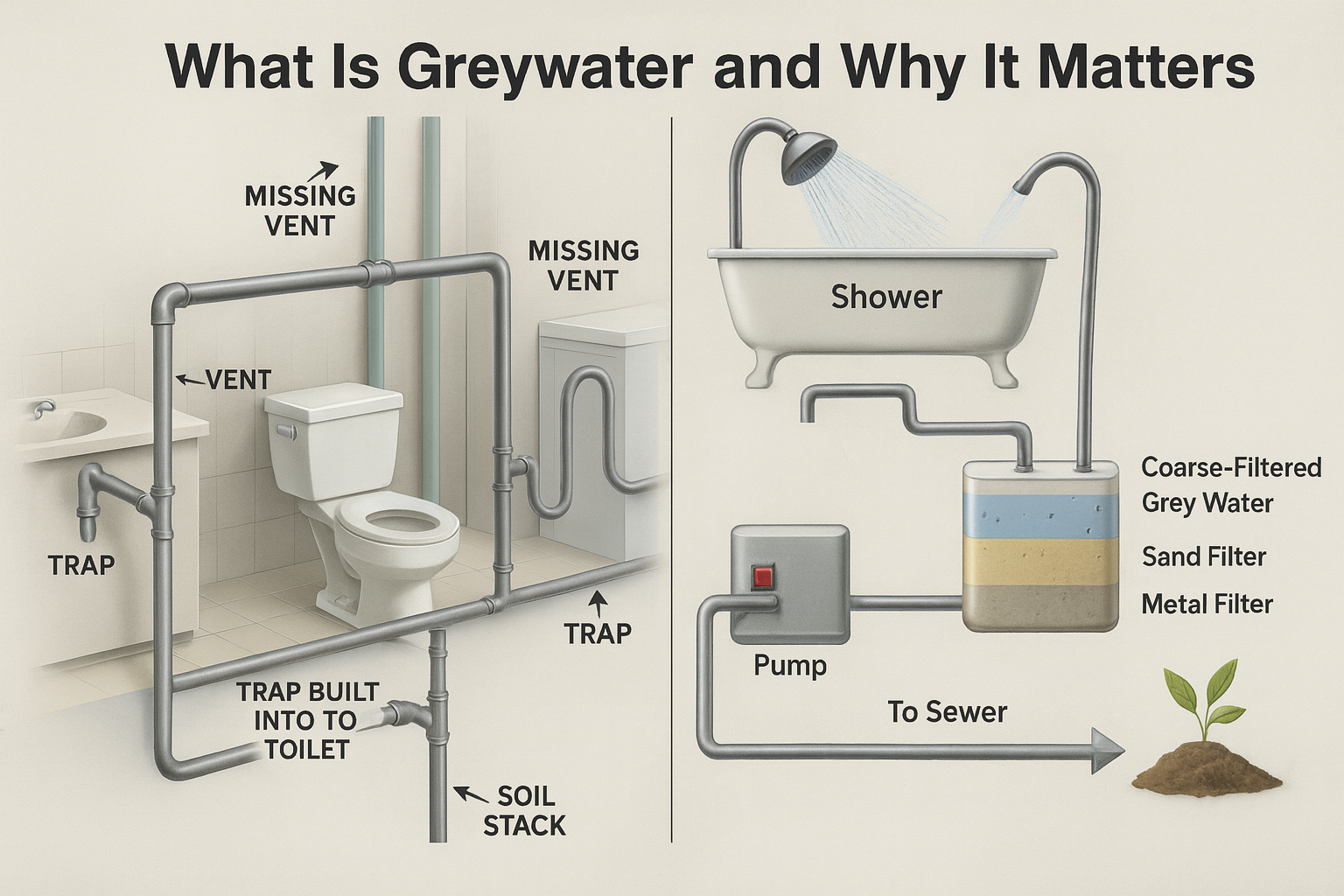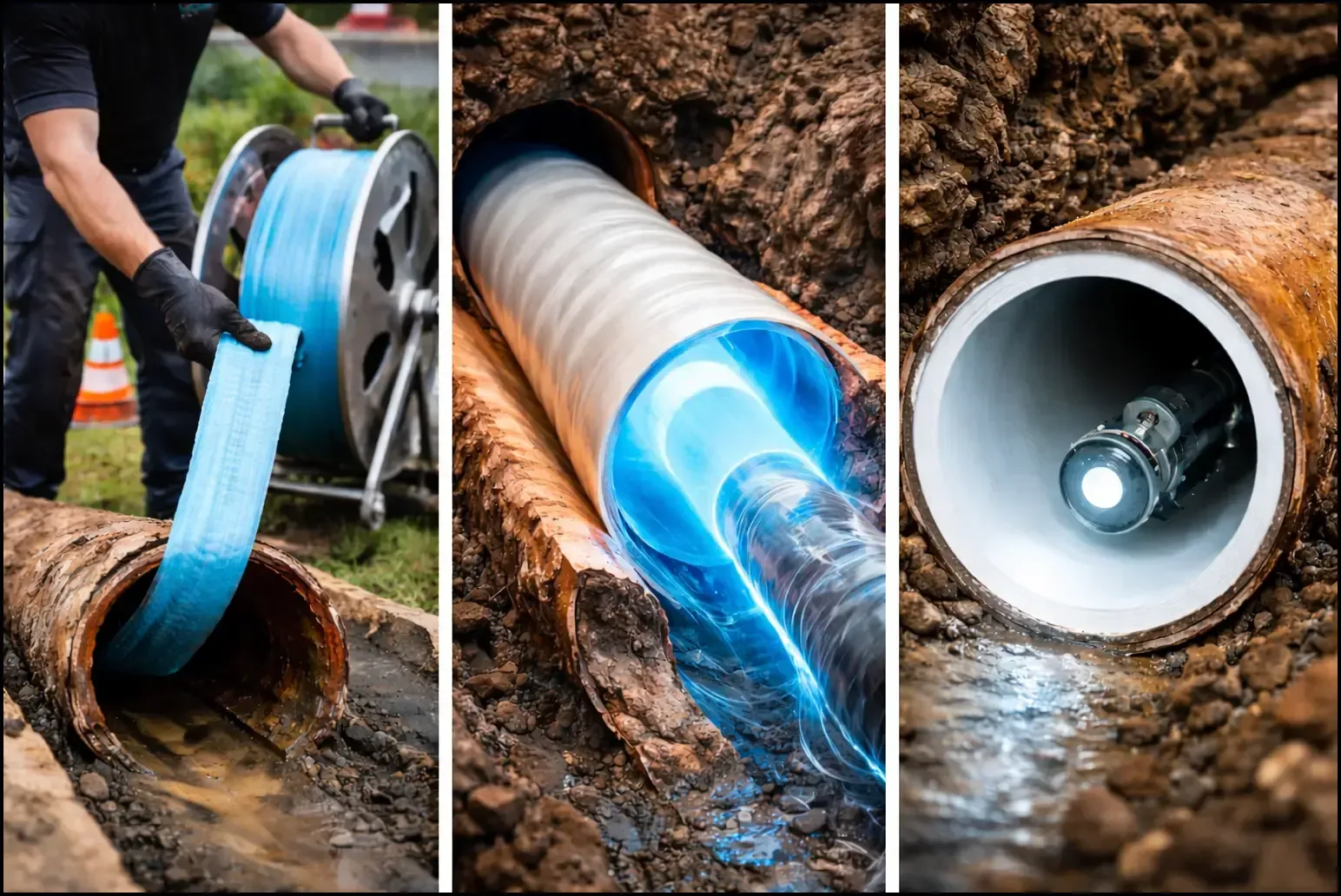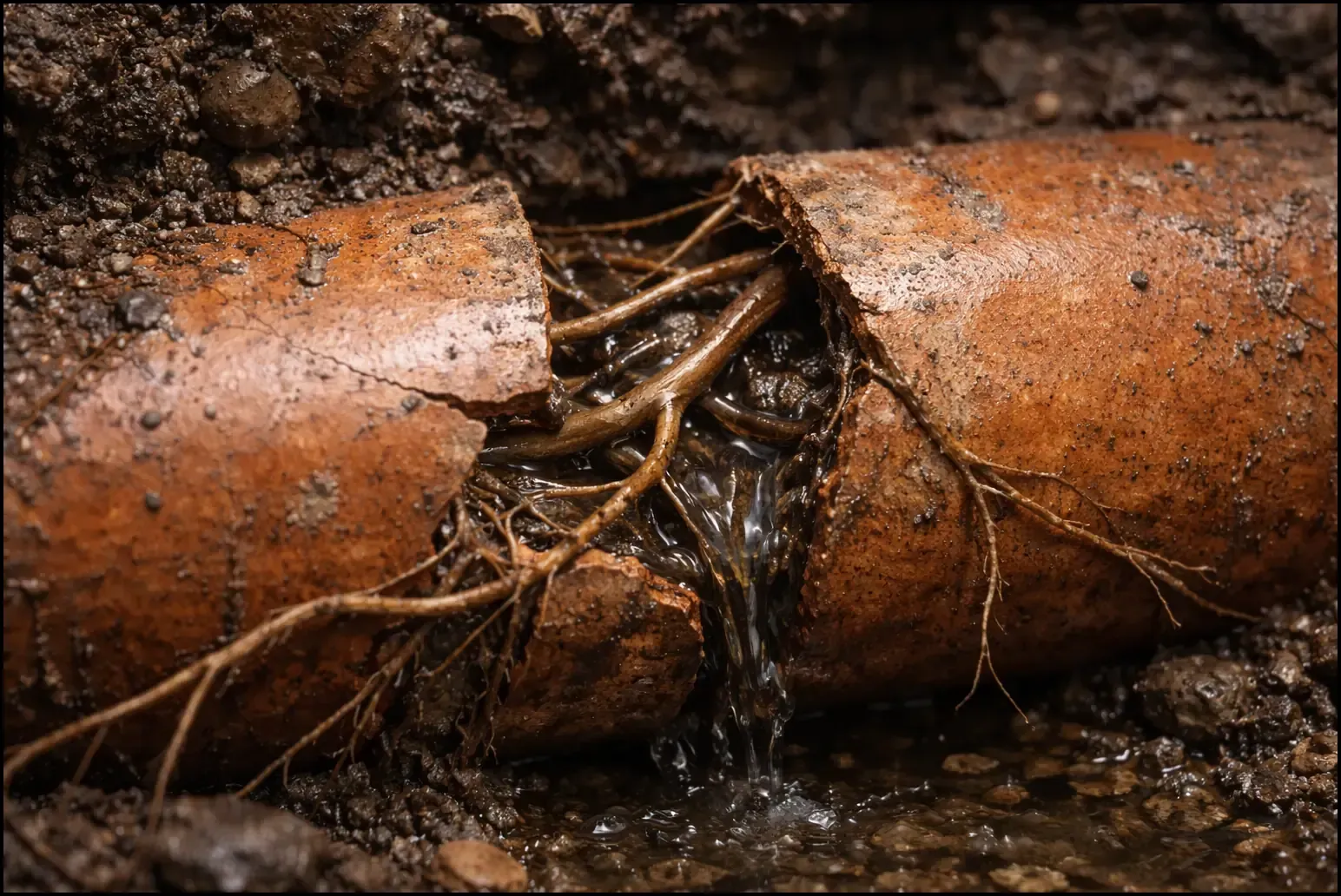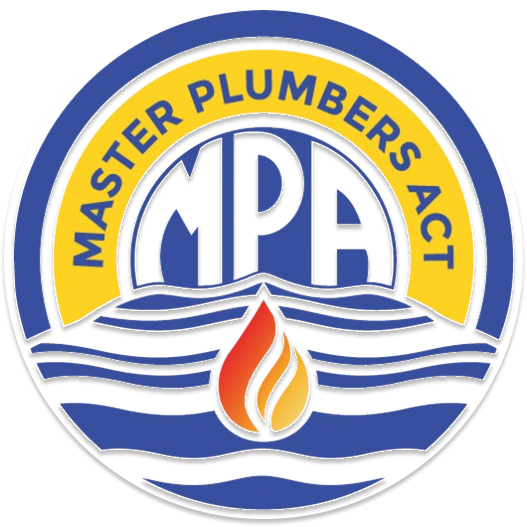Grey Water Systems
Grey Water Systems For Sustainable Home Plumbing
Table of Contents:
- What Is Grey Water and Why It Matters
- How Much Water Can You Reuse?
- Types of Greywater Systems
- Reuse Applications: Irrigation to Toilets
- System Design & Installation Best Practices
- Maintenance & Operational Practices
- Benefits & Savings
- Why J&J Plumbing Services is Your Best Choice
- Ready to Start? Contact Us Today!
- Frequently Asked Questions
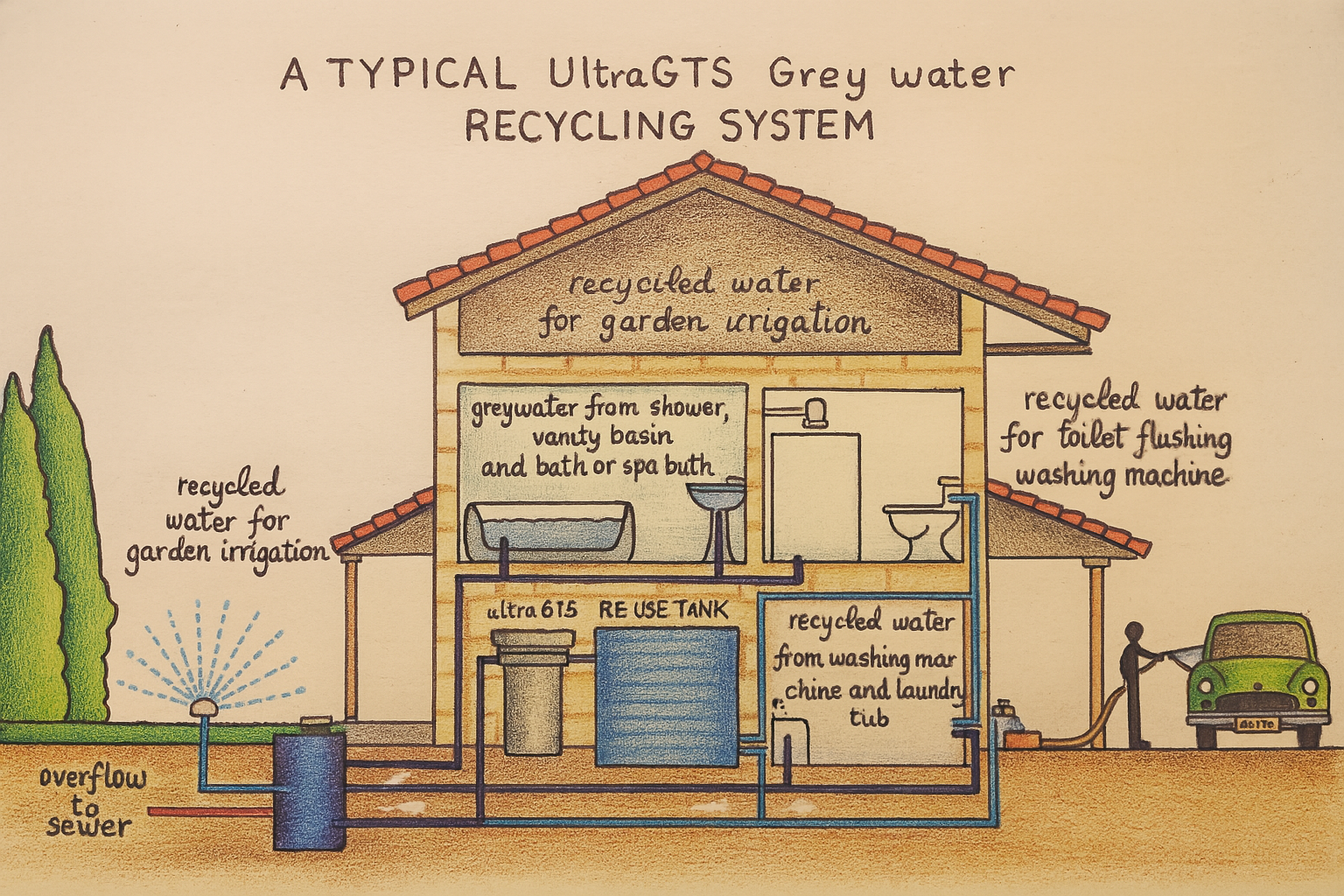
In Canberra’s drought-prone climate, sustainable home plumbing, including greywater treatment, is less a trend and more a survival tactic.
Grey water systems capture lightly used water from showers, laundry, and bathroom taps, then give it a purposeful second life.
Doesn't matter if you chose a fully fledged treatment unit or a straightforward diversion setup.
This technology, especially greywater treatment systems, helps households cut potable water demand.
Users respect water restrictions, trim utility bills, and advance the city’s sustainability targets.
J&J Plumbing Services in Canberra, ACT, designs, installs, and maintains bespoke grey water solutions.
From garden irrigation to toilet flushing, we craft systems that satisfy every council rule.
Most importantly, we deliver dependable, long-term value.
What Is Grey Water and Why It Matters
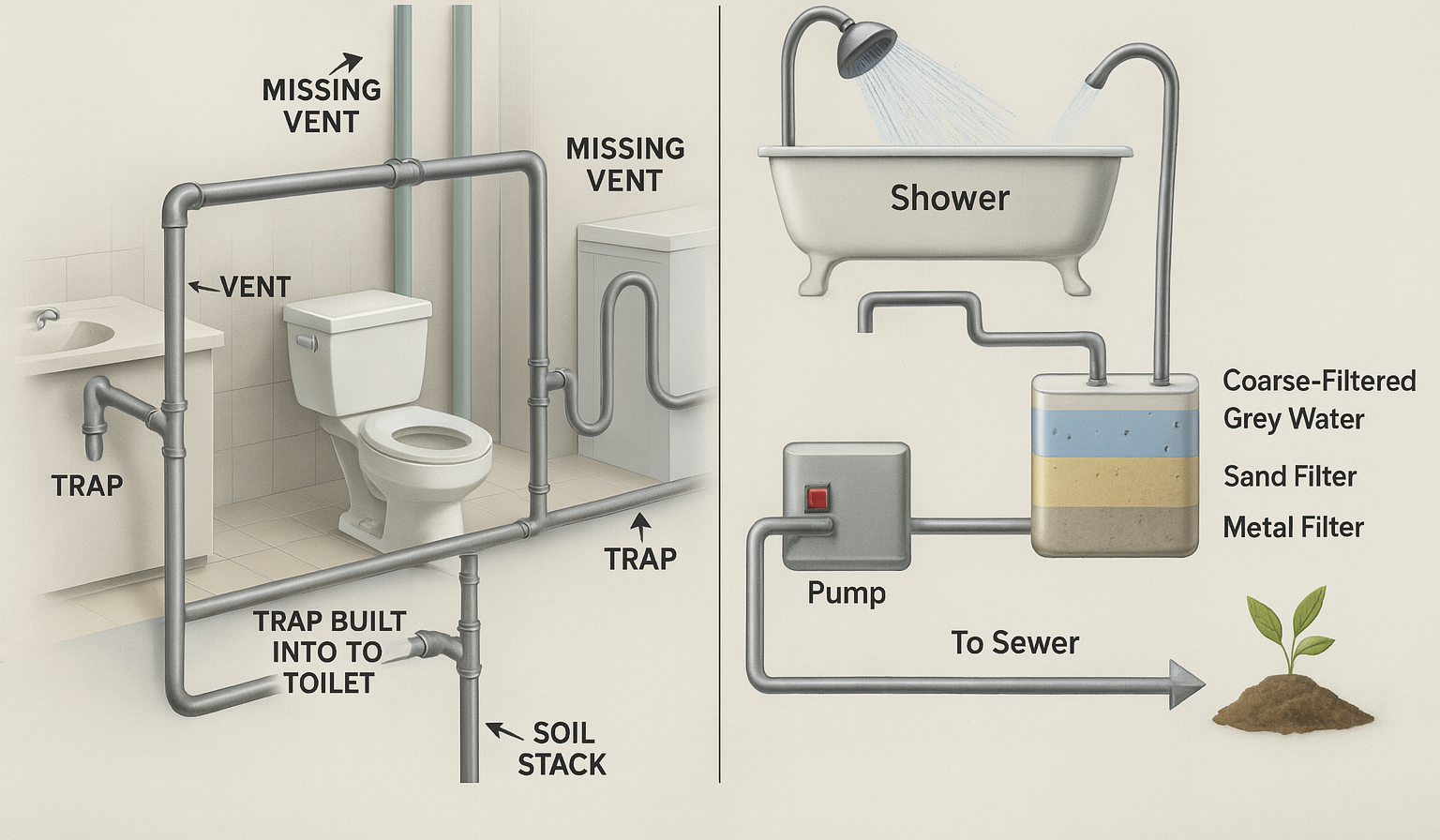
Grey water refers to domestic wastewater, excluding toilet discharge, typically sourced from laundry water, shower water, baths, and bathroom sinks.
Unlike blackwater, it has lower pathogen levels but may contain soap, lint, and traces of food or body waste, meaning untreated greywater should never be reused without caution.
Common water sources in a household include:
- Shower water and baths
- Laundry taps and drains from your washing machine
- Bathroom basins
At J&J Plumbing we remind homeowners that ACT rules forbid storing grey water for more than twenty-four hours. Bacteria boom quickly, smells follow, and public health is put at risk.
This policy mirrors
ACT Health advice
aimed at stopping insect breeding, microbial hazards, and neighbour complaints.
Therefore, we favour systems that support greywater reuse immediately or treat it before storage.
How Much Water Can You Reuse?
ACT’s Think water, act water campaign shows that a typical Canberra household uses about 520 litres a day and roughly 350 litres of that is classed as grey water, aligning with the goals of the
ACT Water Strategy.
Put differently, one home could redirect as much as 2,800 litres each week back into the garden or toilet cistern, easing the load on mains supply.
On a per-person basis, the tally is close to 100 litres a day.
So a family of four produces 300-400 litres of water, including kitchen water, every 24 hours.
This is prime feedstock for irrigation lines or toilet-refill systems.
Because grey water can represent up to 75 percent of a home’s wastewater stream, a well-designed setup can trim overall water demand by 25-45 percent.
Types of Greywater Systems
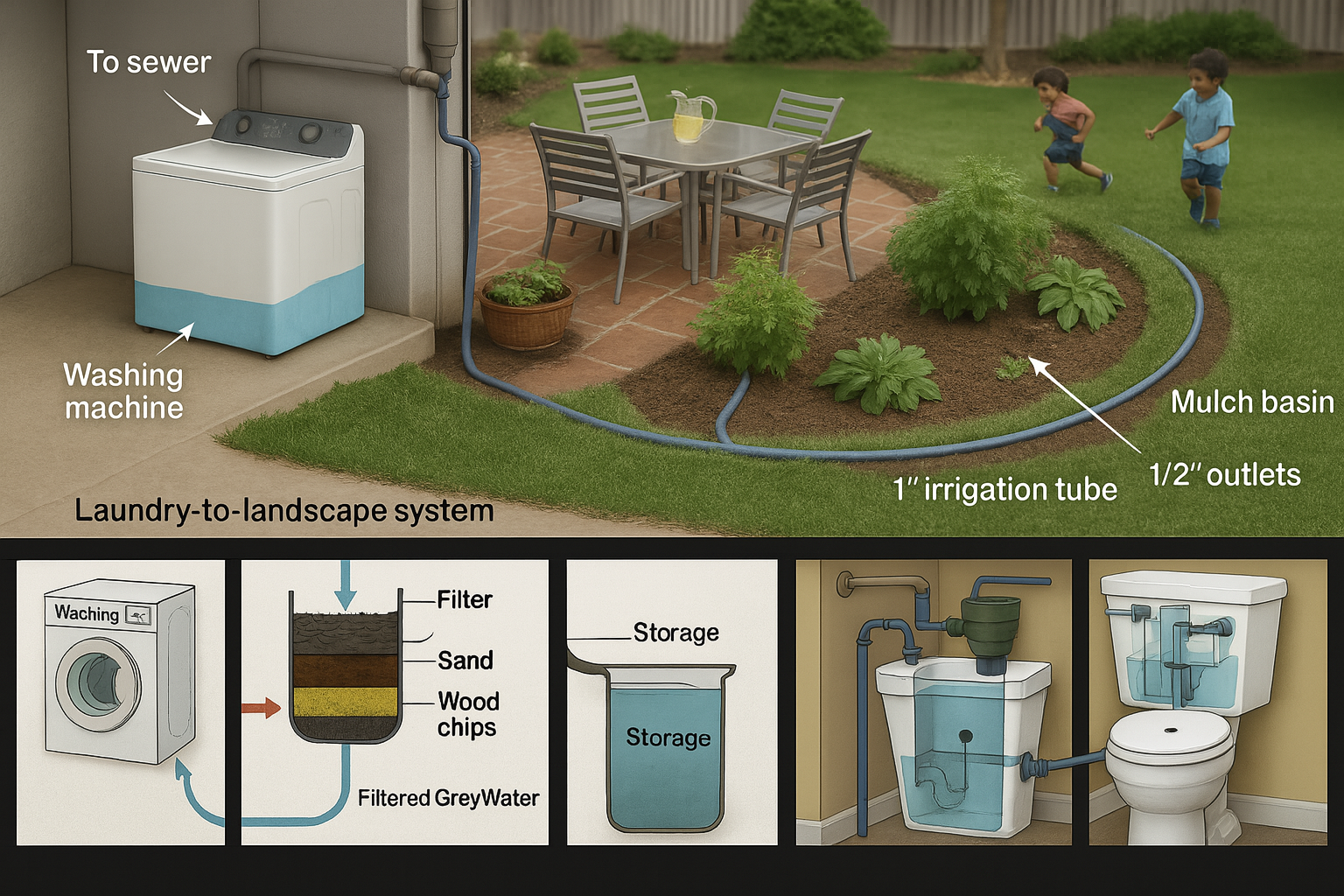
1. Diversion System (Laundry-to-Garden)
A budget-friendly diversion system sends laundry water straight to your garden beds.
With a valve, a lint filter, and a few drip or subsurface lines, it becomes a DIY winner that provides just water solutions, shields the soil surface, and limits human contact.
J&J Plumbing installs units with overflow protection and auto-switching that diverts flow back to sewer during heavy rain or when greasy residues show up.
Our
appliance plumbing services ensure grey water systems are compatible with laundry units and built to last.
2. Treated Greywater Systems
A step up captures flow from showers, basins, and the laundry.
Then channels it through a compact treatment train of filtration, disinfection, a holding tank, and a pump.
This produces steady doses of clean grey water.
Lawn sprinklers, toilet cisterns, and even the weekend car wash all qualify.
Up-front costs and maintenance are higher, yet they pay off when you build for decades, not seasons.
3. Class A Treated Greywater
Under ACT “Option B” standards, Class A systems lift quality even further.
Treated water can supply every toilet, the cold laundry inlet, and outdoor taps, thanks to reliable filters, storage, and pumps sized to match household demand.
It is a full-coverage solution for homeowners who want water savings without compromise.
Reuse Applications: Irrigation to Toilets
Irrigation System
Greywater can keep landscapes green through surface watering or, better yet, subsurface and drip irrigation lines.
These distribute moisture evenly while keeping pathogens below the soil line.
These setups feed lawns, flowerbeds and fruit trees.
They cut reliance on town supply, recharge groundwater, and curb nutrient runoff.
J&J Plumbing designs systems that have precise emitter spacing and balanced flow.
They also include a return-to-sewer safeguard that meets all local council standards.
Toilet Flushing
Treated grey water can shave 30–50 litres off each person’s daily demand when used to refill toilet cisterns.
Pair it with Class A treatment and you will notch substantial savings on mains water while improving flow to the sewer.
Outdoor Uses
With the right treatment in place, non-potable tasks such as deck wash-downs, car rinses, and cold-tap laundry feeds all enter the mix.
Every extra use trims mains consumption and further lightens your household’s environmental footprint.
System Design & Installation Best Practices
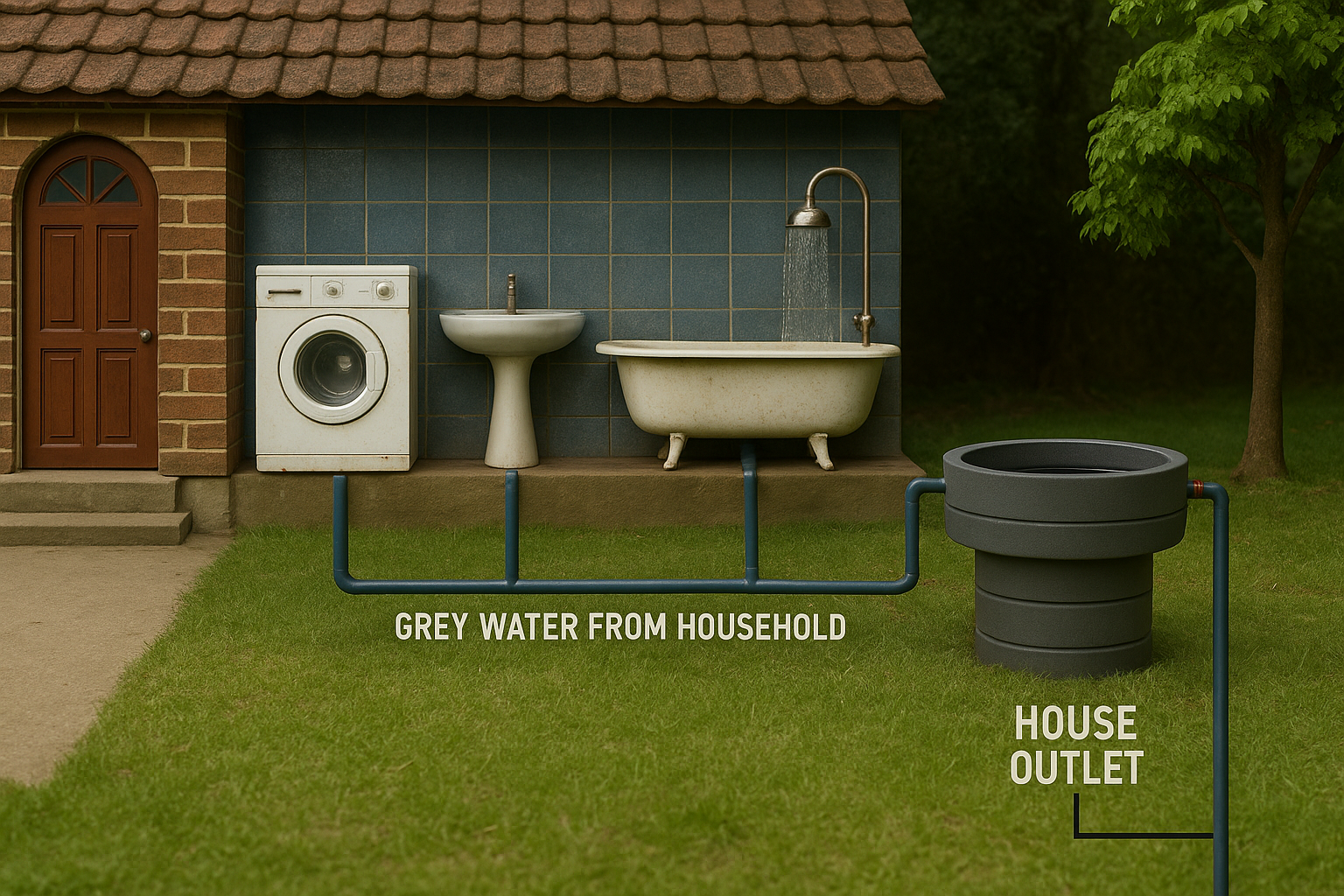
Water Usage Assessment
Begin by measuring how much grey water your household produces each day. Canberra averages near 350 Liters.
Pair that flow to a tank of roughly 2,000-5,000 L and a pump with the right delivery rate to keep the system compliant and reliable.
Core Components
- Diversion valves and gravity lines.
- Tanks with certified backflow prevention and overflow outlets to sewer.
- Lint filters, surge chambers, and mechanical components for treated systems.
- Pumps sized for distribution and irrigation load.
- Control systems for tank levels, disinfection, and fail-safes.
For households upgrading their bathrooms or laundries, our renovation plumbing solutions ensure grey water systems are integrated with future-ready infrastructure.
Local Council & Plumbing Compliance
Every grey water setup must comply with ACT Health’s Greywater Use Guidelines and the
Water & Sewerage Regulation 2001.
This requires separate drainage, overflow capacity, and AS/NZS 3500-approved backflow devices.
J&J Plumbing secures ACTPLA approvals, arranges inspections, and backs each installation with a warranty.
We also offer
burst pipe repair services to safeguard your home from unexpected leaks that could disrupt grey water performance.
Soil, Plant & Health Considerations
- Use subsurface irrigation for edible plants and fruit trees.
- Limit surface irrigation to ornamental gardens.
- Choose eco-friendly soaps to protect soil, plants, and human health.
Maintenance & Operational Practices
Routine Maintenance
- Clean lint filters every few weeks.
- Inspect tanks, pumps, delivery lines, and valves every quarter—scouting for leaks, clogs, or odd vibrations.
- Flush and sanitise pipes and the storage tank annually to stop biofilm and odours before they start.
- Test overflow and back-flow devices to confirm that any excess water heads safely to the drain.
- Keep a running log of inspections, fixes, and filter swaps to stretch component life and boost efficiency.
Health, Environment & Costs
Diligent upkeep heads off wastewater backups, foul smells, mozzie breeding grounds, and lurking pathogens.
J&J Plumbing offers scheduled
plumbing maintenance in Canberra, quick part replacements (including for washing machine green pipe flushes), and instant water-quality tests for every system.
So running costs stay lean and reliability stays high.
Benefits & Savings
- A well-designed grey water setup can redirect about 2,800 L each week, or nearly 200,000 L a year, carving a noticeable dent in household water bills.
- It eases demand on local water services while cutting the volume you pump back into the sewer system.
- By relying on recycled water, you add an extra layer of resilience during Canberra’s inevitable dry spells.
- Nutrient-rich grey water also nourishes soil. They give gardens a natural lift without extra fertiliser.
- Long-term ROI increases with lower water rates. Also, ACT offers incentives like the Utilities Concession, which can provide up to $800 a year, and funding from the Sustainable Household Scheme.
Stack those rebates on top of weekly savings and a grey water system quickly proves itself a financial no-brainer.
Why J&J Plumbing Services is Your Best Choice
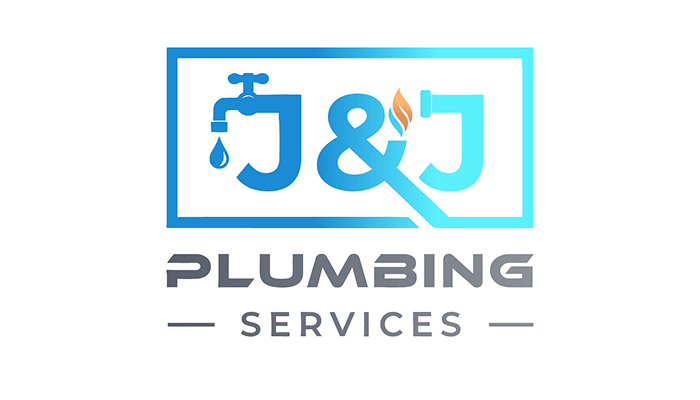
- In-depth familiarity with local council requirements and every ACT regulation.
- Bespoke designs covering both simple diversion setups and full Class A treatment systems.
- Certified installations backed by professional plumbing sign-off and mandatory inspections.
- Clear-cut maintenance plans with upfront estimates of day-to-day running costs.
- Proven results include a recent laundry-to-garden install. It now feeds subsurface lines for veggie patches and fruit trees. This saves hundreds of liters each week.
- Get help with ACT incentives. This includes the Utilities Concession rebate, which gives up to $800 a year, and zero-interest loans through the Sustainable Household Scheme.
With J&J Plumbing, your grey-water system is efficient, compliant, and cost-effective from day one.
Ready to Start? Contact Us Today!
Lock in your water future with a tailored grey-water system from J&J Plumbing Services.
Here’s what we provide:
- Complimentary water-use assessment.
- Custom system design and installation.
- Transparent pricing and lifetime running-cost forecasts.
- Certified plumbing compliance across Canberra, ACT.
Contact us today for your free consultation. Start saving with smart, sustainable plumbing solutions!
Frequently Asked Questions
What is a grey water system?
A grey water system captures lightly used wastewater from showers, baths, the laundry and bathroom sinks (never toilets). After a quick filter or treatment, the water goes to tasks like garden irrigation or toilet refills. It doesn’t just go down the drain.
What are the benefits of greywater systems?
- Cuts potable-water use by roughly 15 – 45 percent.
- Relieves pressure on sewage plants while trimming your water bill.
- Keeps lawns and gardens flourishing through Canberra’s dry spells and enriches soil health.
What are the disadvantages of grey water?
- Requires regular upkeep: filter cleaning, system inspections, and log-keeping.
- Higher up-front cost and the need for plumbing permits.
- Improper storage can lead to odours and potential health risks.
What is the purpose of the grey water tank on ships?
Ships route wash-down, shower, laundry and galley drainage into a dedicated grey water tank. Storing that mix lets the crew control when and where it is released, especially near shore, reducing pollution risk.
What is grey water according to MARPOL? Can grey water be discharged overboard?
- MARPOL defines grey water as drainage from sinks, showers, laundries and baths (excluding toilets).
- It is not covered by MARPOL Annex IV on sewage. Yet, many ports impose their own limits. At sea, discharge is usually allowed beyond specified distances offshore, though rules are tightening.

